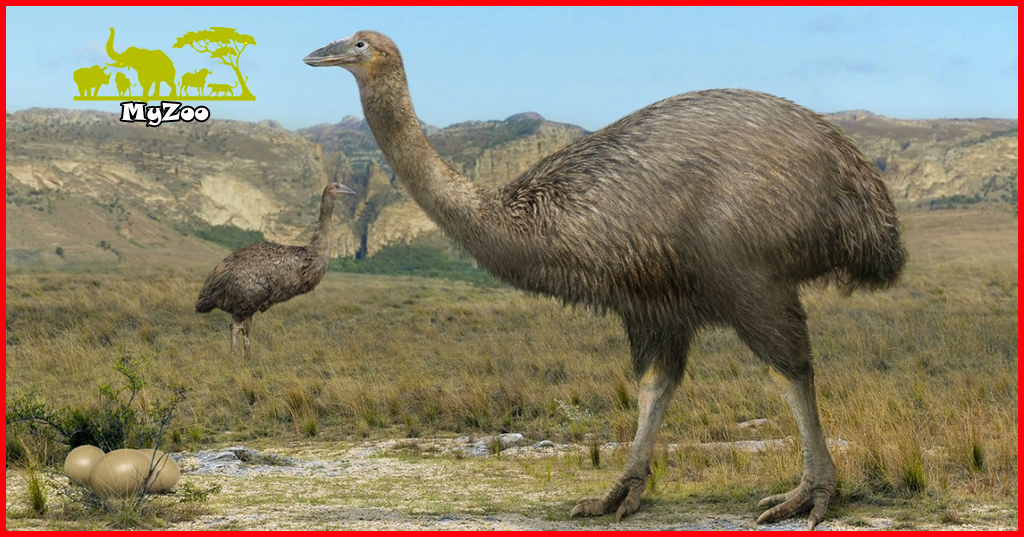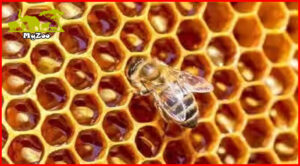
A detailed information about Elephant Bird
The elephant bird is the second largest bird that ever lived. Once lived in Madagascar, was over three meters tall and weighed half a ton. The elephant bird was a large, flightless bird with strong legs that lived in Madagascar . It became extinct at least before the 17th century. There are four species currently classified in the genus A. hildebrandti, A. gracilis, A. medius and A. maximus (Brodkorb, 1963), but this classification is not entirely without controversy, and some authors would classify them in the same species, A. maximus. A. hildebrandti belongs to the order Paleognathus , closely related to the ostrich , is flightless, and has no keel on its sternum.
It lives in the forest and feeds on fruit. Its eggs are as big as an adult’s face. On April 24, 2013, a well-preserved elephant bird egg was sold at Christie’s auction house for $100,000. The egg contained a well-preserved skeleton of a baby elephant bird.
Living habits
The elephant bird lives in swamp forests and feeds on plants. When it eats low-lying plants, it stretches its neck like a giraffe to reach high to eat.
The elephant bird is widely consider to be the largest bird that ever lived in the world. It once lived in Madagascar, was over three meters tall, and weighed up to half a ton. The elephant bird could not fly, but had strong legs. It lived in the forest and fed on fruit. Its eggs were as big as an adult’s face. On April 24, 2013, a well-preserved elephant bird egg was sold at Christie’s auction house for $100,000. The egg contained a well-preserved skeleton of a baby elephant bird.
The elephant bird is essentially extinct, and the reason for its extinction is the same as that of many extinct wild animals – excessive hunting and habitat destruction by humans.
Population distribution
The third largest ocean in the world, the Indian Ocean, although time and waves have covered up its ancient life pictures, scientists have made amazing discoveries. On the island of Madagascar in the southwest corner of the Indian Ocean, scientists have discovered the bones of a bird called the roan bird and the fossilized eggs of this bird.
This is a bird that is very similar to the modern ostrich, cannot fly, and has long been extinct. What is surprising is that the unearthed roan bird fossils actually have bronze foot rings on their feet! What is even more surprising is that the foot rings are engrave with various mysterious symbols and patterns! This may be a kind of hieroglyphics. According to research, the various symbols and patterns on the foot rings of the roan bird. Which die more than 5,000 years ago, have never been seen in Madagascar and are definitely not part of the Malagasy culture.
Cause of extinction

Scientific research shows that human destruction of the environment and hunting of animals have caused animals to become smaller and smaller. Scientists call this phenomenon “contemporary evolution.” The elephant bird regrets that it failed to “contemporarily evolve” in time. Human destruction of the ecology has made the huge earth unable to accommodate its huge body, and it has become extinct.
The National Geographic Society in Washington has a stork bird egg found by Louis Marden in 1967. The egg is intact and contains the skeleton of an unborn bird embryo.
Before the 16th century, new immigrants to the Malay Peninsula still lived a semi-primitive life of slash-and-burn agriculture. As the local population exploded, they needed to cut down large tracts of forest for farming. The habitat of the elephant bird was also severely damage at this time. They were force to look for food everywhere, and sometimes they would run into people’s fields to steal crops. If they were see by the locals, they would most likely not be able to escape. The locals also liked to use the bones and feathers of the elephant bird to make ornaments. This species was originally rare, and eventually it disappeared completely.
The last time humans saw the elephant bird alive was in 1649 , but it died at the hands of local people not long after. Since then, humans have never seen any trace of the elephant bird again.
Species characteristics
The loon, also known as the elephant bird, mainly lives in the forests of Madagascar, the fourth largest island in the world. “Loon” means “high-raised bird”. The loon was 1 meter taller than the moa, and even taller than the world’s largest bird, the ostrich. More than 500 years ago, it could be call the world’s largest bird. Even the eggs of the loon were much larger than those of the latter two birds, weighing as much as 7 ostrich eggs or more than 200 chicken eggs, and the yolk alone weighed 9.4 liters.
The number of rams had always been small. By the 17th century, the population of Madagascar had increased by more than ten times, and they accelerated the pace of exploiting nature and plundering natural resources. Large tracts of forest were cut down and turn into farmland, leaving the rams homeless and many of them died.
1649 was the last year that local residents could hunt the roan. 200 years later, in 1849, someone found a roan egg in the forest of Madagascar. Since then, no trace of the roan has been found, and its title as the world’s largest bird has been lost to the ostrich due to human interference.
The elephant bird is an extinct bird that only lived in the island nation of Madagascar. As for the exact year when the elephant bird became extinct, no one can tell, but it was probably between several decades and more than a hundred years. Although we cannot see the elephant bird, we can still see fragments of its eggs in some desert areas of Madagascar.

Fragments
Out of curiosity, I developed a special interest in the fragments of elephant bird and elephant bird eggs during my recent interview in Madagascar. After some inquiries, the locals told me that the elephant bird is indeed a “specialty” of Madagascar. But unfortunately it has long disappear; the fragments of elephant bird eggs do exist, but there are probably only a few intact elephant bird egg fragments left in the country. Their whereabouts are unknown; elephant bird eggs made of fragments are sometimes sold in the handicraft market, and although it is difficult to identify their authenticity. The country still prohibits them from being lost abroad.
Under the guidance of a friend, we visited the free market and saw the elephant bird eggs made of fragments as we wished. The eggs shape like chicken eggs, and if you compare them to ostrich eggs, it is just like the ratio of ostrich eggs to chicken eggs. In other words, the eggs are shape like rugby balls and are more than twice as big as rugby balls.
To find out more about the elephant bird, I went to the zoo museum in Antananarivo, the capital. The museum displayed a specimen of the elephant bird, and next to it was an ostrich skeleton. Standing side by side with the elephant bird, the ostrich was really “a dwarf compare to a giant”, and felt ashamed of itself. A very brief description pointed out that the elephant bird could be up to 3 meters tall. In a photo posted on the wall, an adult stood next to the elephant bird holding an elephant bird egg, and his head was only about half the size.
Today we regret that we can no longer see elephant birds; but the elephant birds may have had their own regrets: not only has their fate become the same as that of the dinosaurs, but the lemurs that once lived on the same land with them are also suffering a fatal blow and are on the verge of extinction.
Auction of elephant bird eggs

On August 23, 2014, an elephant bird egg native to Madagascar in Africa auctioned in West Sussex, England. This egg, which is say to be the “largest egg in the world”, is expect to fetch a maximum of 50,000 pounds
However, how big is this “largest egg”? It is report that this huge elephant bird egg is equivalent to 7 ostrich eggs, about the size of 100 chicken eggs , or as large as 12,000 hummingbird eggs.
It is report that the diameter of this elephant bird egg is 1 foot (about 0.3 meters), and the bird has been extinct for about 200 years. The person in charge of the auction, said: “This egg is the largest egg in the world. Such a huge egg is a mystery that science cannot solve in terms of structure and function.


One thought on “A detailed information about Elephant Bird”
Comments are closed.